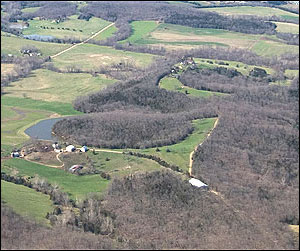EAB management for woodlot owners

With ash species comprising only 4 percent of a typical Missouri woodlot, managing EAB will depend upon the actual makeup of the woodland. Seek the help of a professional forester to determine the best strategy. (Photo by Hank Stelzer, University of Missouri.)
With EAB in Missouri, there are many questions and concerns from woodlot owners on what to do with ash trees on their property. The following are a few management recommendations:
- Until EAB is found in the local area, continue current management practices.
- When selecting ash trees to thin, first remove those that have low vigor and quality. You should maintain dominant and co-dominant ash trees with good health and form.
- Know the risks of moving logs and firewood from and to your land. Visit the Don't Move Firewood webpage and the quarantine sections of this and the other tree pests virtual publications on this website for more information.
Research on EAB in forests in Michigan and Ohio has grimly shown that all ash trees are susceptible to EAB attack regardless of ash density, total tree density, ash basal area, total stand basal area, ash diameter (above 1 inch), tree health and species diversity. Ash survival decreased 30 to 50 percent throughout three years in monitored southeastern Michigan infested stands, and models developed from field observations predict that a healthy forest will lose 98 percent of its ash trees in six years.
There is no way to predict how fast EAB will spread in Missouri. Without artificial movement in firewood, nursery stock, logs and other ash products, it could take years before EAB affects your land. It's best to be prepared and be ready to deal with EAB.
-
EAB in Missouri
- March 31, 2017 (PDF)
-
Frequently asked questions
-
EAB University